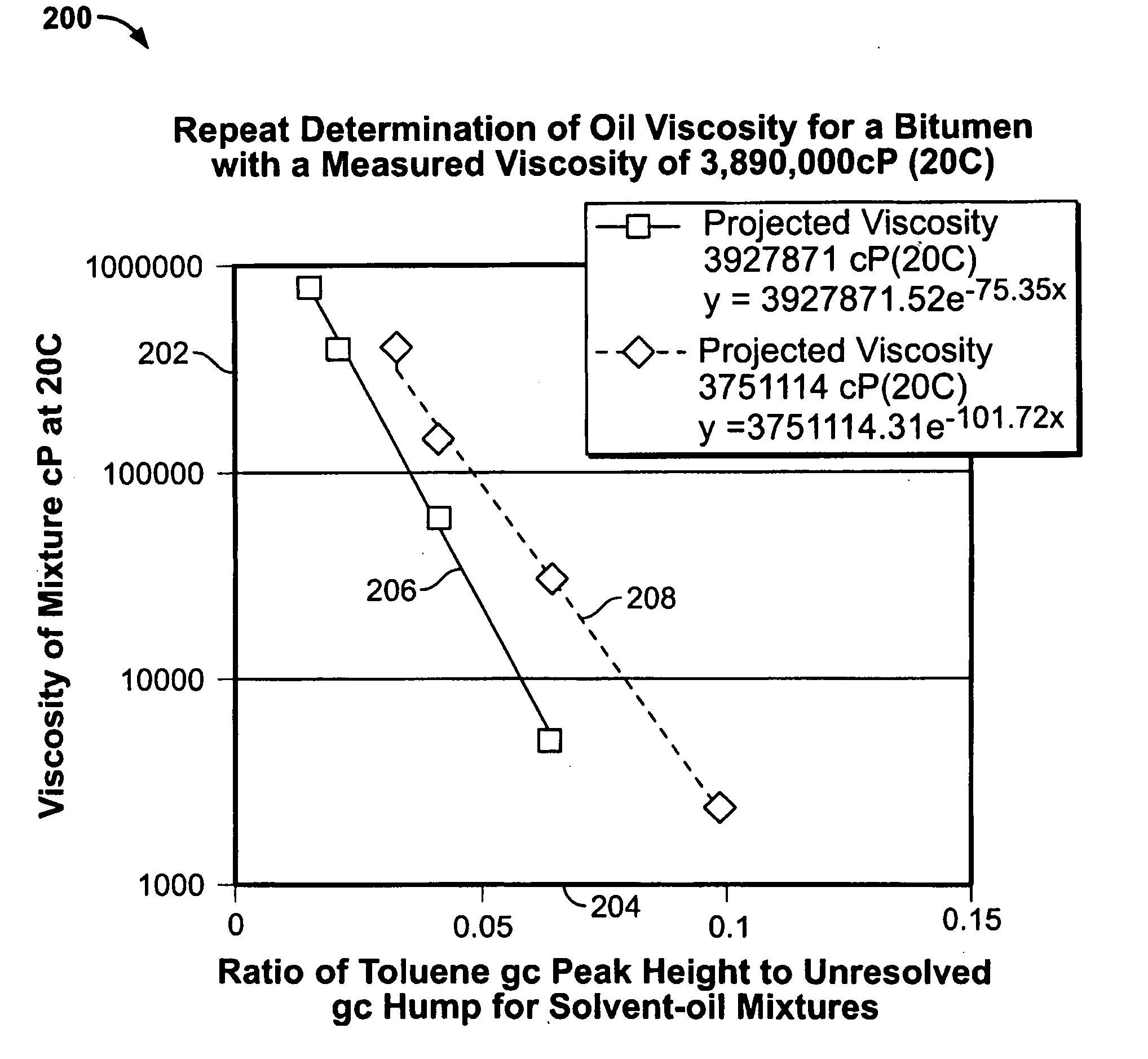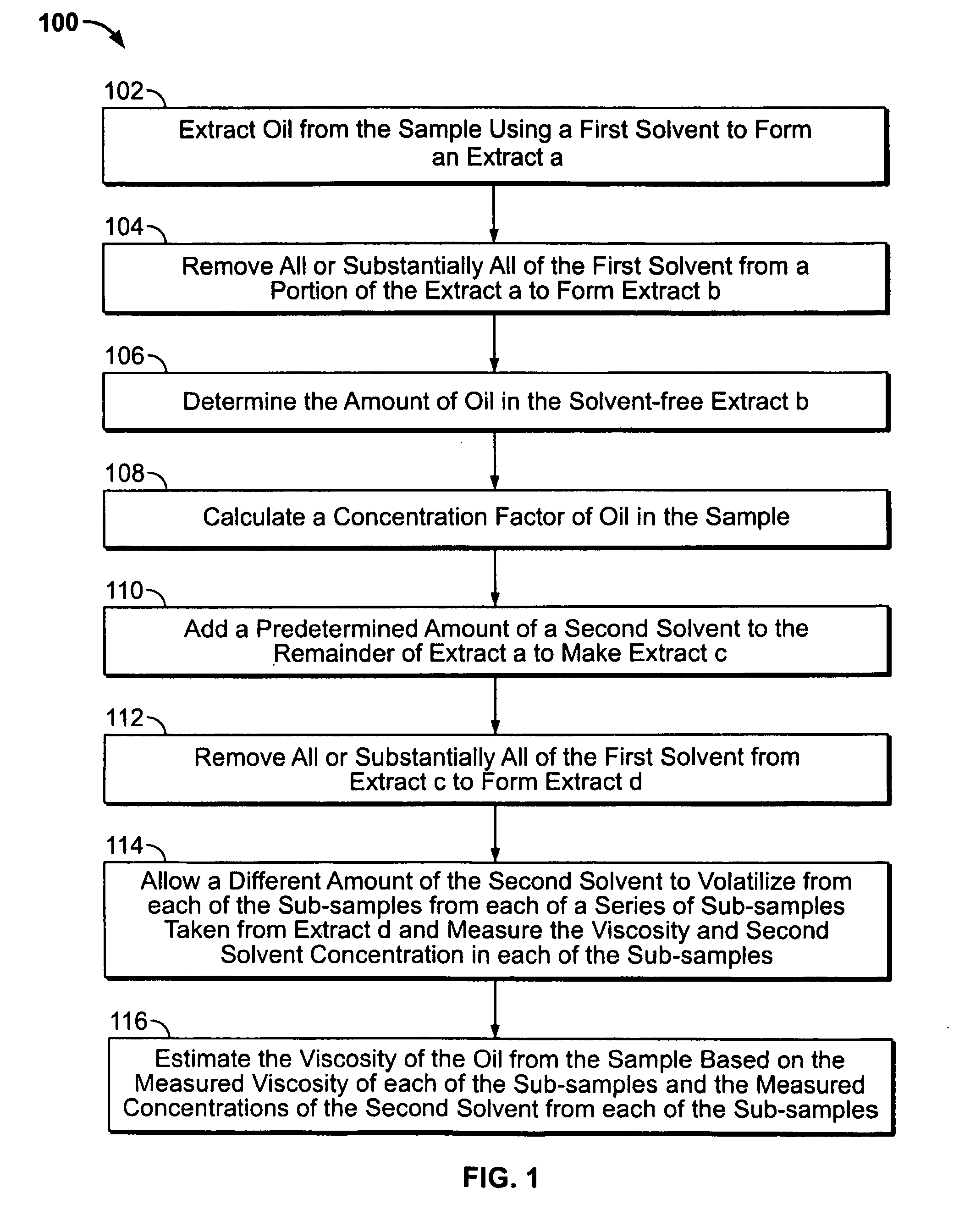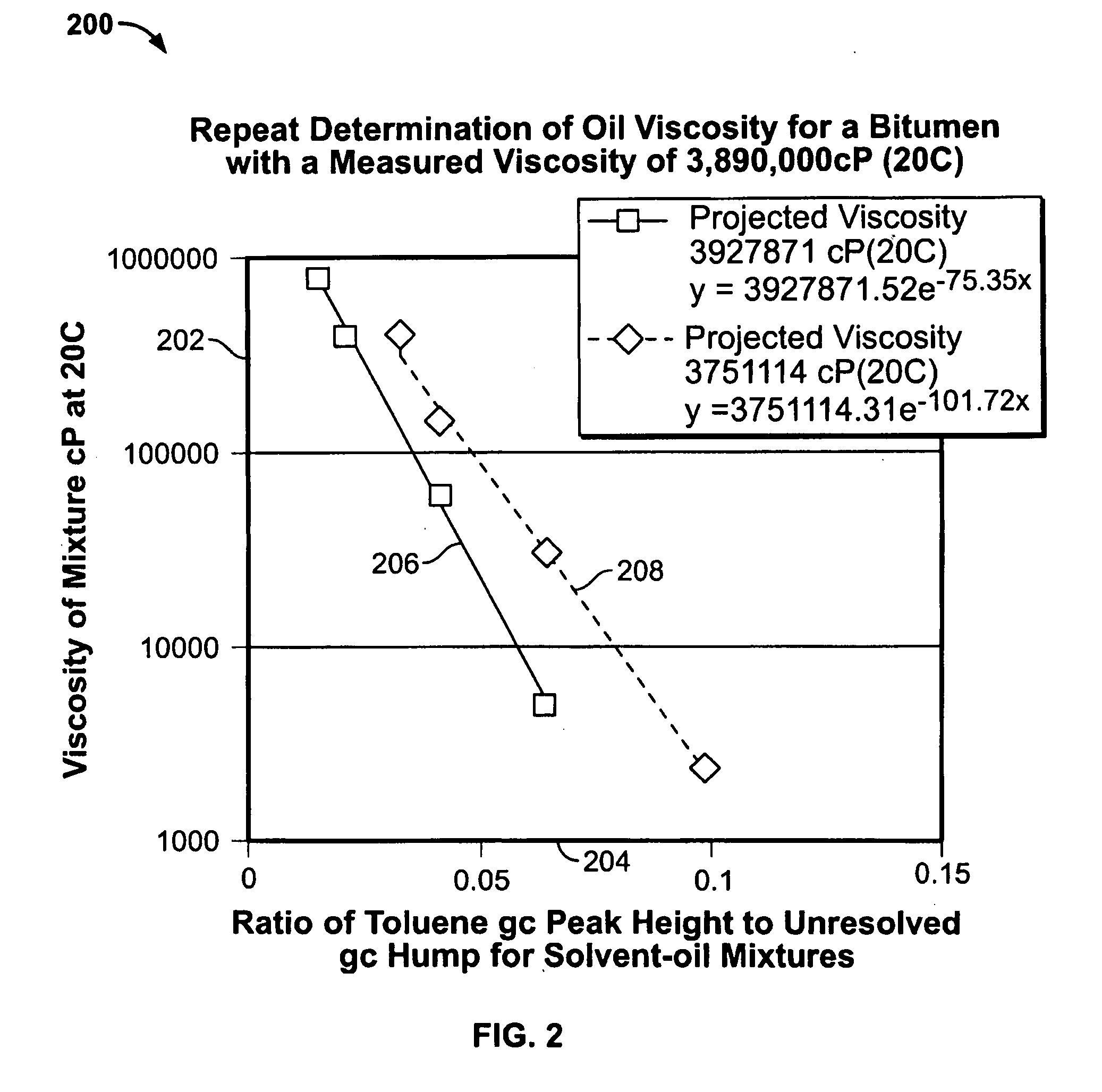Method for measurement of crude oil and bitumen dead oil viscosity and density
- Summary
- Abstract
- Description
- Claims
- Application Information
AI Technical Summary
Benefits of technology
Problems solved by technology
Method used
Image
Examples
example 1
[0026]For a tar sand sample with approximately 10 wt % bitumen saturation, 6 to 10 g of core can provide a sufficient bitumen material. In this example, the viscometer / rheometer required approximately 0.5 g or 0.5 mL of fluid (or extracted equivalent). The example involved the following steps.
[0027]Extraction:[0028]1) Extracted approximately 10-20 g of crushed core material with a volatile polar solvent, dichloromethane (DCM). Other volatile polar solvents (about 250 mL) can be used.[0029]2) Removed solvent to a minimum volume of 10 mL via Buchi (rotary evaporator).[0030]3) Transferred extract to a measuring cylinder and removed an aliquot ( 1 / 10 by volume).[0031]4) The aliquot was transferred to a pre-weighed aluminum weighing dish (about 5 cm ID, 20 mL volume) to let solvent evaporate. Solvent can also be removed using a stream of nitrogen gas, or leaving the extract in the fume hood at room temperature.[0032]5) Following complete (or almost complete) removal of solvent, weighed t...
PUM
 Login to View More
Login to View More Abstract
Description
Claims
Application Information
 Login to View More
Login to View More - R&D
- Intellectual Property
- Life Sciences
- Materials
- Tech Scout
- Unparalleled Data Quality
- Higher Quality Content
- 60% Fewer Hallucinations
Browse by: Latest US Patents, China's latest patents, Technical Efficacy Thesaurus, Application Domain, Technology Topic, Popular Technical Reports.
© 2025 PatSnap. All rights reserved.Legal|Privacy policy|Modern Slavery Act Transparency Statement|Sitemap|About US| Contact US: help@patsnap.com



